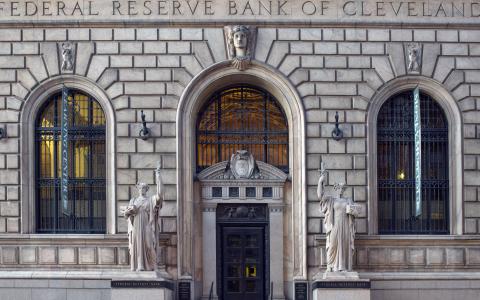
(Bloomberg) - Federal Reserve Bank of Cleveland President Loretta Mester said policymakers should move their benchmark rate above 5% this year and hold it at restrictive levels for some time to quell inflation, with the exact level depending on how quickly price pressures ease.
To put inflation on a steady path down to 2%, monetary policy needs to move “somewhat further into restrictive territory this year, with the fed funds rate moving above 5% and the real fed funds rate staying in positive territory for some time,” Mester said at an event Tuesday in New York with the Money Marketeers of New York University.
Fed officials lifted interest rates by a quarter percentage point last month, bringing their policy benchmark to a target range of 4.75% to 5%, up from near zero a year earlier. Forecasts released at the same time showed the 18 officials expected rates to reach 5.1% by year-end, according to their median projection.
In a question-and-answer session following her remarks, Mester said she was “very comfortable” with Fed officials’ decision to raise rates by a quarter percentage point in March, despite a string of bank collapses that sent tremors through financial markets. “So far that seems to have stabilized at the moment,” Mester said, pointing to actions by the Fed and other regulators to stem the contagion.
No Cuts
She also said she does not anticipate that policymakers will cut rates this year.
Policymakers speaking since the meeting have said they are watching economic data to determine how much recent banking stress may tighten access to credit or slow the economy. Some have suggested the US central bank remains on course to raise interest rates at least one more time, in line with officials’ latest quarterly forecasts.
The end point for interest rates will be determined by how long it takes for the economy to cool and for price pressures to ease, Mester said.
“Precisely how much higher the federal funds rate will need to go from here and for how long policy will need to remain restrictive will depend on how much inflation and inflation expectations are moving down, and that will depend on how much demand is slowing, supply challenges are being resolved, and price pressures are easing,” she said in her prepared remarks.
Mester also said she expects “meaningful” improvement in inflation soon, with price growth moving down to about 3.75% this year and reaching the central bank’s 2% goal in 2025.
The latest economic reports paint the picture of an economy that is moderating but still has more cooling to do to alleviate concerns about inflation. The Fed’s preferred inflation gauge showed that while core price pressures eased in March, headline inflation rose 5% from a year ago, still more than double the Fed’s 2% target. The March jobs report due Friday will also influence what officials do at the May 2-3 policy meeting.
System Sound
Mester said the US banking system is sound and that officials will be watching to see how much access to credit tightens following the recent stress, adjusting monetary policy if needed.
“Going forward, Fed policymakers will continue to assess the magnitude and duration of these effects and their implications for the outlook for inflation and employment and, therefore, for appropriate monetary policy,” Mester said.
(Updates with Mester comments in fourth paragraph.)
By Jonnelle Marte



